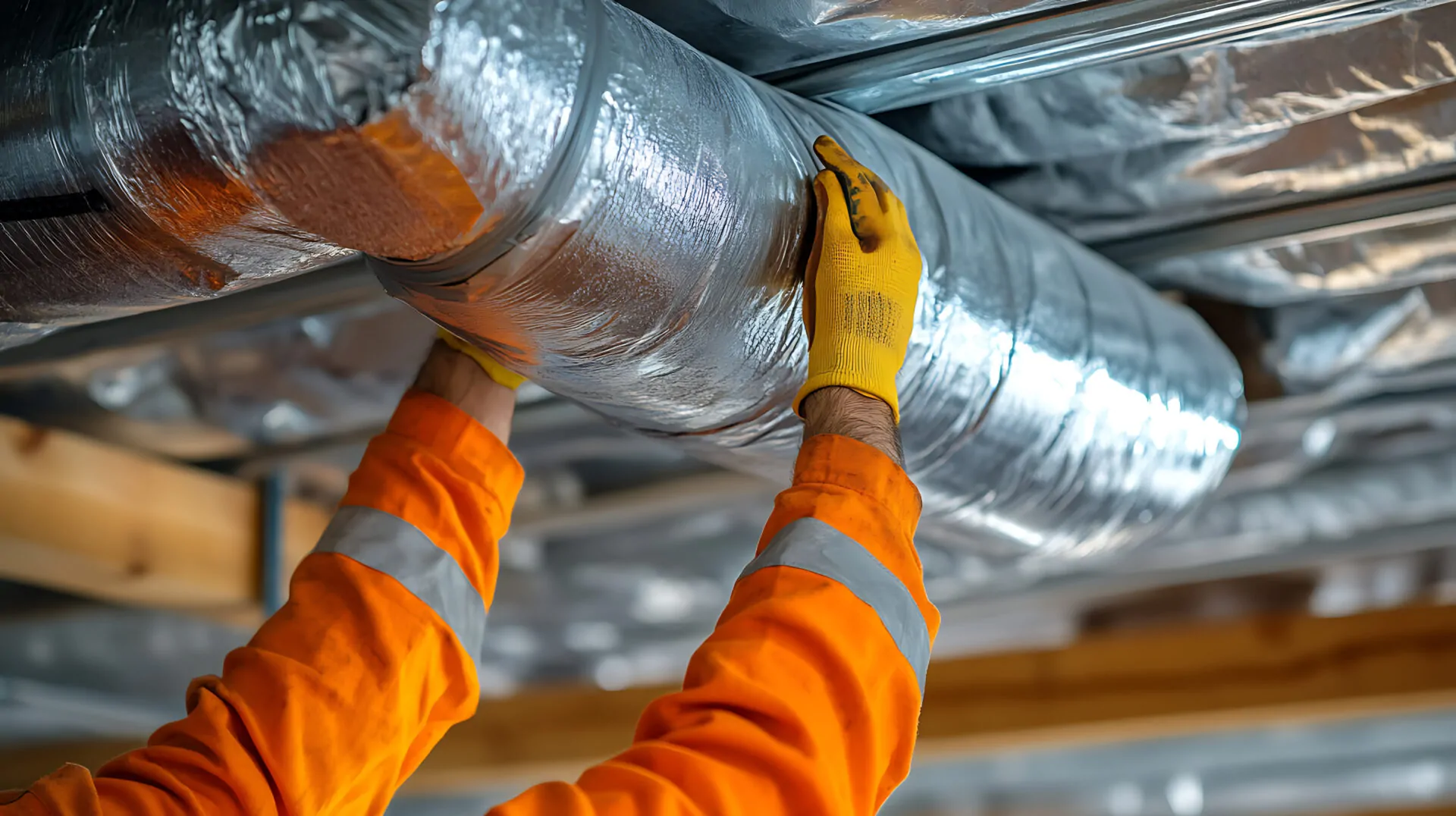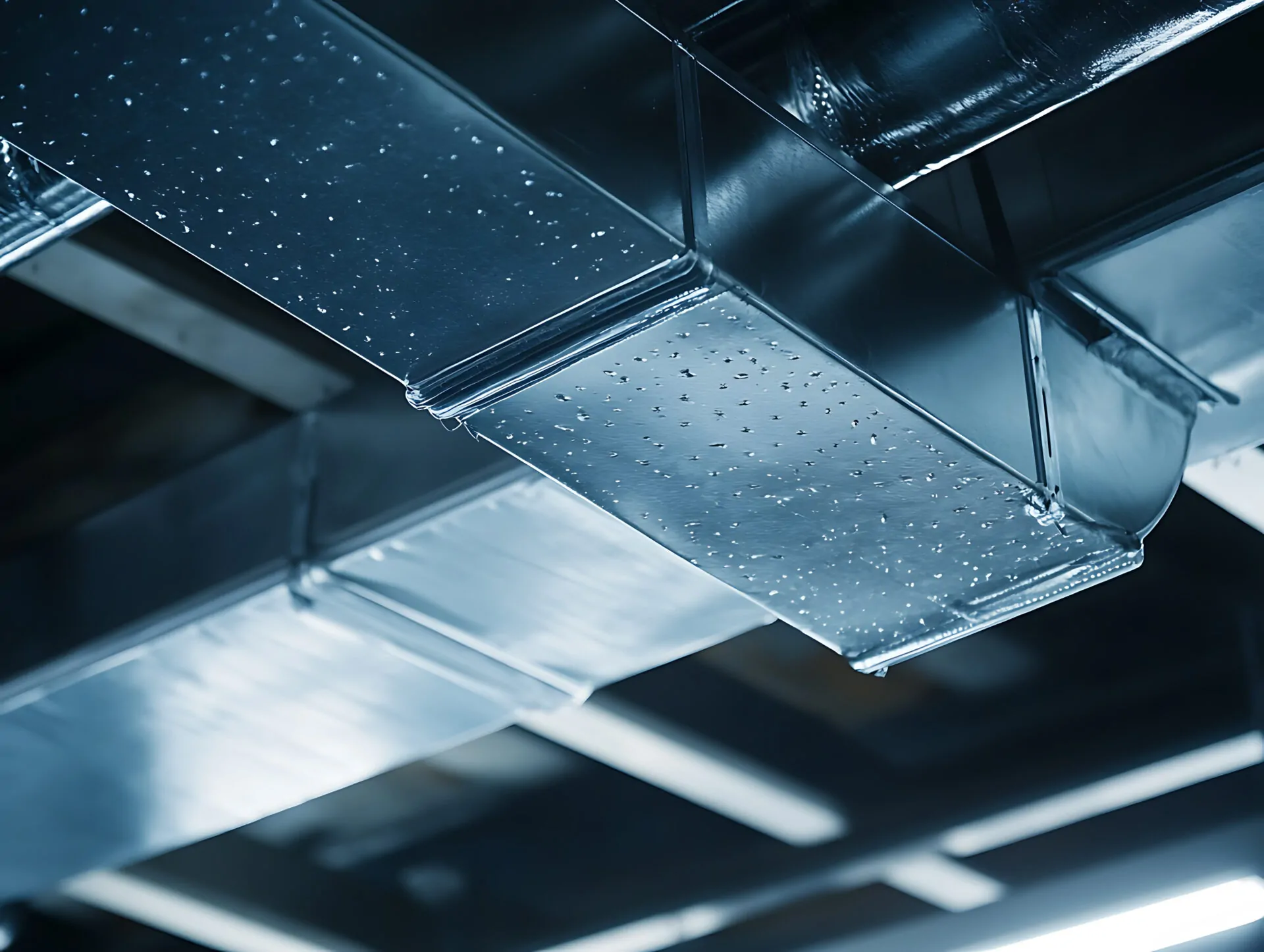How to Stop Condensation on Ductwork
Condensation on ductwork is a common problem in many homes and commercial buildings, especially in humid climates or during the summer months. Warm, moist air comes into contact with the cooler surface of the ducts, causing moisture to form on the outside. This not only causes water damage, mold growth, and corrosion but also reduces the efficiency of your HVAC system. Understanding how to stop condensation on ductwork is essential for maintaining indoor air quality and protecting your property.
Why Does Condensation Occur on Ductwork
Ducts often carry cooled air from air conditioning systems, which makes their surfaces cooler than the surrounding air. When warm, humid air from the surrounding space touches these cold surfaces, the moisture in the air condenses into water droplets, much like a cold glass “sweats” on a hot day. This is particularly problematic in unconditioned spaces such as basements, attics, or crawlspaces where humidity levels are higher.
The Risks of Condensation on Ductwork
Water Damage
Persistent condensation on ductwork can lead to water dripping onto ceilings, walls, insulation, and floors. Over time, this moisture can cause structural damage and weaken building materials. If left unchecked, the damage may require costly repairs.
Mold and Mildew Growth
Moisture from condensation creates an ideal environment for mold and mildew to grow on and around the ducts. Mold spores can spread through the air, potentially causing respiratory issues and allergic reactions. Additionally, mold growth often leads to unpleasant odors and unsightly stains.
Corrosion and Rust
Constant exposure to moisture causes metal ducts to corrode and rust over time. This deterioration weakens the duct material, increasing the risk of leaks and holes. Corroded ducts can reduce the lifespan of the HVAC system and increase maintenance costs.
Reduced HVAC Efficiency
When moisture accumulates on ducts, it can compromise the insulation wrapped around them. Poor insulation leads to energy loss, causing the HVAC system to work harder to maintain the desired temperatures. This inefficiency results in higher utility bills and increased wear on the system.
How to Stop Condensation on Ductwork: Effective Solutions
1. Insulate Your Ductwork
One of the best ways to prevent condensation on ductwork is by insulating your ductwork. Proper insulation keeps the duct surface temperature closer to the ambient air temperature, thereby reducing the likelihood of moisture condensation.
- Use foam insulation sleeves or duct wrap insulation specifically designed for HVAC ducts.
- Ensure insulation covers the entire duct surface and is adequately sealed to prevent gaps.
- For metal ducts, consider using vapor barrier insulation to block moisture penetration.

2. Control Indoor Humidity Levels
Reducing the overall humidity in your home or building minimizes the amount of moisture that can condense on duct surfaces.
- Use dehumidifiers in areas prone to dampness, such as basements, crawlspaces, or attics.
- Improve ventilation in humid spaces by installing exhaust fans or opening windows to increase airflow.
- Fix any leaks or sources of excess moisture, such as plumbing leaks or roof leaks.
3. Seal Air Leaks in Ductwork
Air leaks cause conditioned air to escape and unconditioned air to enter ducts, making condensation on ductwork more likely.
- Use mastic sealant or metal tape to seal all duct joints and seams.
- Check connections at vents and registers to ensure tight fits.
4. Increase Airflow Around Ducts
Good airflow helps reduce humidity buildup around ducts.
- Avoid blocking ductwork with stored items, insulation, or other objects.
- Ensure adequate return air pathways and ventilation around ducts.
- Consider installing a small fan in enclosed or tight spaces, such as crawl spaces, to circulate air.
5. Use Vapor Barriers in Vulnerable Areas
Vapor barriers block moisture from reaching duct surfaces, especially in crawlspaces or basements.
- Install plastic sheeting or specialized vapor barriers on floors and walls of crawlspaces.
- Seal foundation vents to limit humid outside air infiltration.
6. Maintain Your HVAC System Regularly
A well-maintained HVAC system reduces condensation on ductwork problems.
- Change air filters regularly to maintain good airflow.
- Ensure your air conditioner’s refrigerant levels are correct to avoid excessively cold ducts.
- Schedule professional inspections and tune-ups.
When to Call a Professional
If you’ve tried these steps and condensation on ductwork persists, it’s time to call an HVAC professional or building inspector. They can assess your system, ductwork condition, and building envelope to recommend more advanced solutions like:
- Duct replacement with insulated or fiberglass ducts
- Installation of an HVAC system with built-in humidity control
- Improving building insulation and sealing
Conclusion
Condensation on ductwork is a common but manageable issue that can cause severe damage if left untreated. To prevent condensation and safeguard both your HVAC system and property, focus on insulating the ductwork, managing indoor humidity, sealing any gaps, and maintaining steady airflow. Staying on top of routine maintenance and consulting professionals when needed can help keep your ducts dry and your home comfortable throughout every season.
Ready to eliminate condensation on ductwork problems and keep it dry and efficient?
Contact Canilu Air today for expert HVAC inspection, duct insulation, and humidity control solutions. Protect your home or business with reliable service from Arizona’s air quality specialists—Call Canilu Air now!


